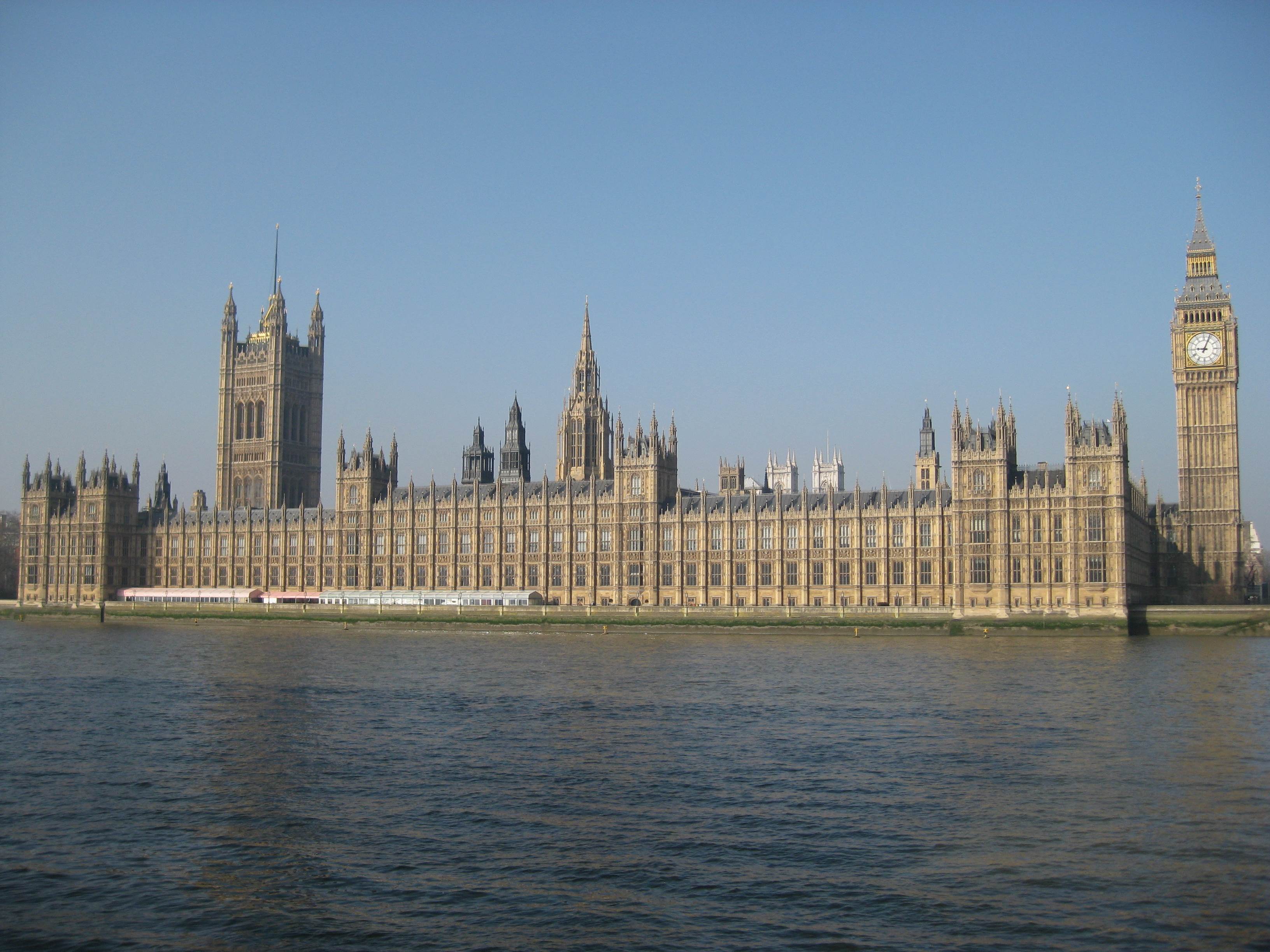
Judicial Independence in the UK and USA
Written by Marshall Tisdale, Programmes Administrator, CPA Headquarters Secretariat
Article posted on 07/12/2023
I very recently had the pleasure to walk the many halls of Westminster with an old friend of mine whose expertise in the history of the palace far exceeds my own. I had toured the parliamentary estate several times before, but on this occasion my friend made it feel like the first, a testament to how vast his knowledge is. As we came to the gothic opulence that is the House of Lords chamber, I was reminded by my friend of a certain fact about the composition of the Lords, that being that less than two decades ago, the House of Lords was both a legislature and a courtroom attended by Law Lords.
This fact stands out to me now more than ever following the 66th Commonwealth Parliamentary Conference in Accra, Ghana and more pertinently, the discussions and workshops surrounding the Commonwealth Latimer House Principles that took place there.
Fundamentally, these Principles emphasise the importance of the separation of powers between the three branches of government. The United Kingdom seemed to have taken this principle very literally as Law Lords became physically separated from their seats in the House of Lords. Now, like much of the Commonwealth and the rest of the world, the UK has its own Supreme Court and its own fully-fledged third branch of government.
The establishment of the Supreme Court in the UK set a clear boundary on the relationship between the legislature and the judiciary. No longer does one chamber of the legislature have judicial powers that could be exercised over the other. This has likely done much to improve the perceived legitimacy of both the court and the House of Lords. One can only imagine how some would have reacted had the Law Lords still been around for more politically sensitive cases, making their rulings from the House of Lords, and inevitably dragging the upper chamber into constitutional disputes.
The greatest aim of the creation of the UK’s Supreme Court was to further affirm the independence of the judiciary and the separation of powers from the other branches of government, two important principles to come out of Latimer House.
When I joined my friend for a walk through the Palace of Westminster, I did not foresee it inspiring such deep contemplation on the nature of the relationship between the judiciary, the legislature and the executive in the UK, but here we are. I am left further contemplating what are some models for best practices in achieving judicial independence and the separation of powers across the globe. My mind turned to the US and its Supreme Court, which is arguably more familiar than the UK’s. I quickly came to the conclusion that the US may not be a model for best practice but instead represent a cautionary tale of the dangers of the politicization of the courts and the failure to establish a clear boundary between the three branches of government.
Unfortunately, it is true that the principles established at Latimer House that guide Commonwealth members are not universal, particularly not in the world’s most recognisable democratic power. The US falls at the first few hurdles when it comes to reaching the benchmarks of the Commonwealth Latimer House Principles. Quite notably in Section IV; the independence of the judiciary, which notes;
“Judicial appointments should be made on the basis of clearly defined criteria and by a publicly declared process”
with those appointments being based on equality of opportunity and merit.
The first issue we run into is the term “appointment” because, while it is an important component of the Commonwealth Latimer House Principles, it is not shared by the American judiciary system. It is the case that in many US states, judges are elected to their positions across many levels, including state Supreme Courts. Nothing says judicial independence like being beholden to public elections for your job.
Eleven states in the US explicitly integrate party affiliation into the selection of their judges. In nine of those states, voters go to the ballot box to vote for Supreme Court justices and put an X in the box of the judge with a D or an R next to their name. A further thirteen states have non-partisan Supreme Court elections, and even more lower court judges are elected through either of these two methods.
At this point, the judiciary in these states simply becomes an extension of the political process. The principle of an apolitical court as envisioned at Latimer House is disregarded across much of the US. In the cases where judges are not elected in the US, the process of appointment is still a political exercise.
Upon the passing of Supreme Court Justice, Antonin Scalia in 2016, and President Barack Obama’s attempt to replace the late justice, Republican Senator, Ted Cruz, said
“We cannot afford to lose the Supreme Court for generations to come”.
What is to come of a judicial system where the politicians involved in nominating justices perceive the court as just another political branch to be won?
The appointment of judges to the US Supreme Court has become such a highly political affair that various justices, like the late Ruth Bader Ginsburg, are immortalized in memorabilia from badges, to T-shirts, pillows, and even prayer candles. I feel assured in saying that the authors of the Latimer House Principles had no illusions that, when devising their principles on the judiciary, the average citizen of the Commonwealth couldn’t name a single member of their country’s Supreme Court.
The Commonwealth Latimer House Principles’ authors would probably be assured that if a Supreme Court justice were to sadly pass in office in a Commonwealth jurisdiction, their passing would not likely turn into an overtly politicized event with the future of the court and the nation at stake (not least as term limits and retirement age apply to Commonwealth judges). The same cannot be said for our American friends.
The aforementioned death of Justice Antonin Scalia led to the Supreme Court being one member short for a massive 422 days. Republican Senate leaders refused to give President Obama’s nomination a hearing, citing the fact it was an election year. The refusal to allow a sitting President to fulfil his constitutional duties was a break with precedent which had huge consequences for the court. The legislative branch of the government was putting the court at risk of being stuck in a deadlock on certain cases as one of its nine seats remained vacant. Section II of the Commonwealth Latimer House Principles describes the ideal relationship between the legislature and the judiciary as being the following;
“Judiciaries and Parliaments should fulfill their respective but critical roles in the promotion of the rule of law in a complementary and constructive manner”
This principle that guides Commonwealth members was flaunted in the US Legislature. There was little complementary nor constructive in restricting the Supreme Court from effectively carrying out its role by denying them a full bench of justices.
The controversial role between the legislature and the judiciary does not stop there. No, in fact the very same Republican leadership who in 2016 decided replacing a justice 269 days before an election was too soon later began the process of confirming a replacement for Justice Ginsburg 46 days out before the 2020 election. Some might view this as hypocrisy from the Senate leadership, and now, with the heavy conservative lean of the Supreme Court, polling suggests this has proved to undermine the public’s confidence and trust in the court, falling to a historic low in 2022.[1]
The politicization of the Supreme Court is not even a recent phenomenon. We can look back to 1937 and FDR’s attempts to reform the court in order to receive a favourable ruling on the New Deal. We can chart increasing polarisation with the establishment of the conservative Federalist Society in 1982 in a backlash against the liberal court of Earl Warren. The society has gone on to have immense influence in the selection process for federal courts, including the Supreme Court. You could make the claim the court got political when they started appointing actual politicians to it.
The most recent elected official to serve on the Supreme Court was Sandra Day O'Connor, who upon retiring in 2006, capped off a career that involved serving as the Republican Majority Leader of the Arizona State Senate. O’Connor’s hearing was also the first to be televised, which has doubtless given motivation to some Senators to use the platform to advance their own careers. Countless other politicians have served on the court, including the former President, William Howard Taft.
If we really want to know why the US Supreme Court is so political and just why it is such an outlier compared to Commonwealth Supreme Courts, then we have to go as far back as 1803. The year of America's 27th birthday was also the year of the immensely consequential Marbury v. Madison Supreme Court case which established the principle of judicial review. What is judicial review you might ask? Judicial review is when the Supreme Court determines whether a law is in line with the US Constitution or not.
So, essentially, the US Supreme Court is one of the very few of its kind that can unilaterally block legislation passed and approved by the other two branches of government. With this amount of power, it is no wonder that politicians on both sides have sought to capture a majority on the Supreme Court. The checks and balances the three branches of government are meant to have on each other are in a state of disarray. When the court exists as just a judicial arm of the opposition or governing party, how can you be assured there are going to be fair checks and balances against the Legislature and the Executive? The answer is you can’t. It is the reason why when President Biden tweets sentiments like ‘healthcare is a right’ or ‘it is time for universal background checks’ they can remain just that, sentiments.
It is these political realities of the US that should remind us why the principles adopted at Latimer House are just so important. Before Latimer House, Commonwealth countries had their own challenges in the relationship between the three branches of government. The authors of Latimer House hoped that the doctrine agreed there would seek to end the erosion of the checks and balances that hold each branch of government accountable. A lot of progress has been made in the 20 years since the Principles' adoption.
Far more progress made than what can be said for the US. We should be buoyed by the fact we belong to an international community that recognised the challenges we all faced and collectively sought a solution and guiding framework against which we can all measure ourselves. Yes, the Commonwealth Latimer House Principles have proved to be an effective check and balance against our national checks and balances.
References:
[1] 2022 poll conducted by Gallup found trust the judicial branch was at 47%, a historic low. Supreme Court Trust, Job Approval at Historical Lows (gallup.com)
Return to the CPA blog series: 'Commonwealth Latimer House Principles 20 Years On: 'Power of Parliaments'
Follow the CPA on social media to continue the discussion.



